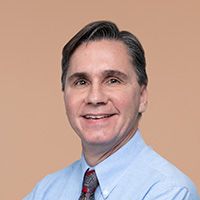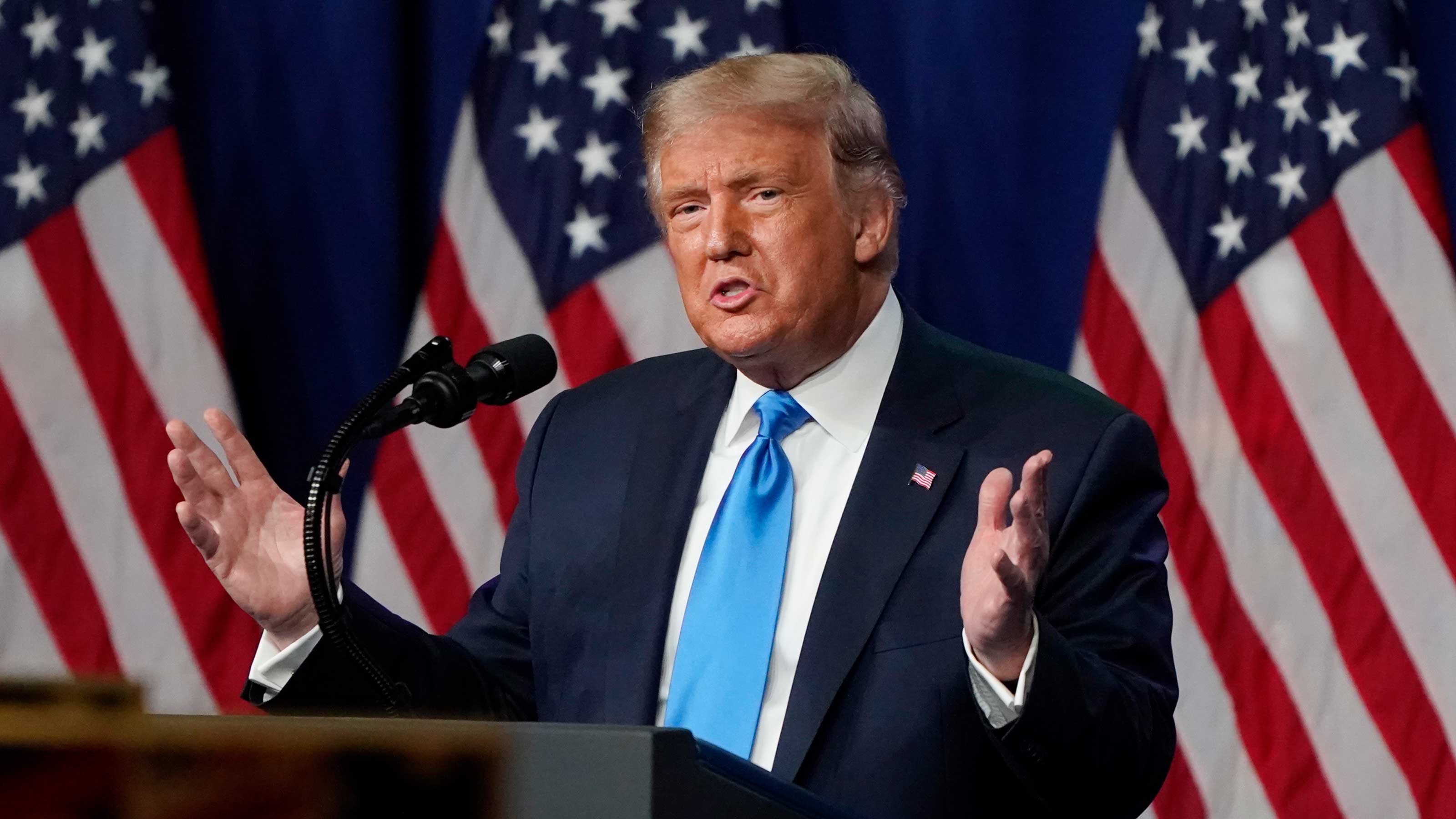Election 2020: President Trump's Tax Plans
The president still hasn't provided details about second-term tax plans if he wins the election, but he has dropped a few hints over the past few months.


The Trump administration talked about releasing a comprehensive second-term tax strategy earlier this year, but the COVID-19 pandemic derailed that plan. So, instead, we're left with a handful of vague ideas and bullet-point descriptions about various tax cuts the president would like to pursue if he's re-elected. (Unlike Joe Biden, don't expect President Trump to call for any tax increases.)
The Trump campaign promised more detail on his second-term agenda, but at this point we don't think that will ever happen. Plus, adding to the confusion, the president has occasionally come out in favor of a particular tax proposal, only to reverse course or walk back support for it later. So, we'll just have to make do with the scant information currently available when trying to figure out what the president would do about taxes during a second term.
This puts voters in a tight spot. Despite the stock market's rebound over the past few months, there are still serious problems with the U.S. economy right now – and tax policy is going to be an important part of any economic recovery in the future. With the election right around the corner, that means voters need to know now where the president stands on taxes. So, to that end, we combed through Trump administration statements and came up with a list of the most significant tax proposals President Trump has put forth or supported this year. While we don't have very much detail on these proposals, there's enough meat on the bones to get a sense of where the president stands on taxes.

Payroll Tax Cut
President Trump has already signed an executive order deferring the collection of Social Security payroll taxes that are taken out of each worker's paycheck. The 6.2% tax is suspended from September 1 until the end of the year for employees making less than $4,000 for any bi-weekly pay period (i.e., $2,000 per week, or $104,000 per year).
However, this is not a payroll tax cut. These taxes will still have to be paid later. The president's order just delays the due date until 2021 (the IRS says the taxes must be withheld and paid ratably from January 1 to April 30, 2021). But if Trump is re-elected, he promised to push for the deferred taxes to be completely forgiven. He may also try to implement additional payroll tax cuts. If he does, we don't know whether he'll just ask for a partial or temporary cut, or if he'll want to completely and/or permanently do away with the tax.
It's also important to note that the president's order doesn't require employers to stop withholding the 6.2% Social Security tax. Many businesses are still withholding the tax, because they don't want to be collecting the tax from their employees later. So, some workers aren't seeing any difference in their paycheck during the September to December period. In addition, if you're unemployed, retired, or don't have a job for some other reason, the payroll tax deferral won't help you anyway (and neither would a payroll tax cut in 2021). If the Social Security tax is cut or eliminated, the government would also have to find some other way to fund Social Security, which won't be easy.

Middle-Class Tax Cuts
Before the pandemic, the Trump administration hinted that the president's election-year tax plan would include a tax cut for middle-class Americans. As noted above, that tax plan never materialized. However, if Trump is re-elected, don't be surprised to see the idea of a middle-class tax cut resurface – potentially by lowering the current 22% tax rate for individuals to 15% or otherwise adjusting the tax brackets to put more middle-income people into lower brackets.
Also expect the president to seek permanent status for at least some of the provisions in the Tax Cuts and Jobs Act (TCJA) of 2017 that lowered taxes for individuals. Right now, most of those tax cuts are set to expire after 2025. Changes from the TCJA that Trump would likely want to extend include those that lowered tax rates, increased the standard deduction, doubled the child tax credit, and established the tax credit for other dependents.

Stimulus Checks
Although negotiations for another economic stimulus package have stalled, President Trump has said many times that he wants a second round of stimulus checks. (The first round of stimulus checks were actually advanced payments of a new "recovery rebate" tax credit for the 2020 tax year.)
However, how much those second-round payments should be is something that the president has been less than clear about. In an August tweet, he referred to $3,400 payments for a family of four, which is the same amount as first-round payments to such a family under the CARES Act. On the other hand, he earlier suggested that higher payments were needed.
We also don't know if President Trump supports payments to families for all dependents or only for children 16 years of age or younger. First-round payments included a base amount of $1,200, plus an additional $500 for each child under age 17. However, some plans for a second round of stimulus checks open the additional payments to all dependents. For instance, the stimulus check proposal in the HEROES Act, which was passed by the Democrat-controlled House of Representatives in May, would provide an additional $1,200 for up to three dependents regardless of age. The Republican-supported HEALS Act would also provide extra payments for all dependents. The HEALS Act amount would only be $500 per dependent, but there would be no limit on the number of dependents who qualify for the additional amount.

Reducing Taxes on Capital Gains
Over the past few months, President Trump has talked a lot about cutting taxes on capital gains. While this would likely spur investment and economic growth, it also disproportionately benefits the wealthy. That makes it a tough policy to enact.
The president has suggested two different ways of lowering the tax on capital gains. First, he wants to reduce the tax rates on long-term capital gains. Currently, they're taxed at either 0%, 15% or 20%, depending on your income. (For most people, the applicable rate on capital gains is lower than the tax rate they pay on wages and other "ordinary" income.) Higher-income taxpayers also have an additional 3.8% surtax applied to their net investment income. The president has suggested eliminating the 20% rate and setting that the top rate on long-term capital gains at 15%.
Trump has also called for indexing capital gains for inflation. When you sell stock or another capital asset, you pay capital gains tax on the difference between the sales price and the asset's basis. Indexing capital gains would increase the basis of a capital asset to account for inflation from the time you acquire the asset until the time you sell it. If the basis is higher, the difference between the sales price and the basis is smaller. That means you pay tax on a smaller amount.
(If the Supreme Court completely overturns Obamacare, the 3.8% surtax on net investment income, which includes capital gains, will also be eliminated.)

Expanding Opportunity Zones
President Trump's second-term agenda lists "Expand Opportunity Zones" as one of the core priorities if he's re-elected. We don't know exactly how he would expand the OZ program, but any expansion of this tax break would most likely only benefit wealthier Americans.
Here's how the program works: You can defer capital gains from the sale of business or personal property by investing the proceeds in qualified opportunity funds (QOF). These funds are then invested in economically distressed communities. You can defer all or a portion of the gain from the sale of a capital asset, and you generally have 180 days from the date of the sale to invest the proceeds in a QOF. The deferral runs until December 31, 2026, or until you pull your money out of the QOF, whichever comes first. If you keep your money in the fund for five years, your taxable gain on the original asset sale is reduced by 10%. Hold on to the investment for seven years, and you get an additional 5% reduction. If you stay invested for 10 years, any gain from the QOF investment is tax-free.
OZs aren't for everyone, though. QOFs typically require investors to have a high net worth, a minimum annual income, and at least a six-figure investment. That's why these investment vehicles are mainly for wealthier taxpayers. Investing in a QOF is also complicated and there are no guarantees that the development projects will be successful. As a result, investors who don't fully understand the OZ program or have a low tolerance for risk should stay away.

Travel Tax Credit
The president has shown some interest in helping the airlines, hotels, restaurants, and other businesses that rely on money spent by people on vacation through a tax credit for travel expenses. In a meeting with restaurant industry representative, he touted a proposal for such a credit, saying it would be "a big deal."
Trump was referring to the American Tax Rebate and Incentive Program (TRIP) Act, which would allow a tax credit for domestic travel expenses. (The credit is often called the "Explore America" tax credit.) The credit would be worth up to $4,000 ($8,000 for married couples filing a joint return), plus an additional $500 for each child age 16 or younger.
The credit would cover travel-related expenses for transportation, lodging, food and beverages, live entertainment (including sporting events), or attendance at a conference or business meeting. There would be limitations on where and when you can travel, though.

School Choice
President Trump has often talked about expand school choice options, and there's a tax angle to this support. Republican lawmakers have introduced bills in Congress that would provide tax credits for cash donations to certain organizations that provide scholarships to K-12 students. The president has publicly supported these credits.
Under the proposed legislation, the tax credits would be capped at 10% of adjusted gross income for individual taxpayers and 5% of taxable income for corporations. Taxpayers would be able to carry forward any excess credits for up to five years and use them on future tax returns.

Business Tax Breaks
Businesses would be up for some additional tax breaks during a Trump second term. Again, we don't have details for any of this year's business tax proposals. But we do have a nice bullet-point list that includes:
- "Made in America" tax credits;
- Cut taxes to keep jobs in America;
- Tax credits for companies that bring back jobs from China;
- 100% expensing deductions for essential industries like pharmaceuticals and robotics that bring manufacturing back to the U.S.;
- Restoring the deductibility of meals and entertainment costs; and
- Extending business tax breaks in the TCJA.
The president has also talked about lowering the corporate income tax rate to 20% (it was reduced from 35% to 21% by the TCJA).
The Trump administration also supports enhancements to the employee retention tax credit, which was enacted in March as part of the CARES Act. The refundable credit against certain employment taxes is equal to 50% of qualified wages paid to workers from March 13 to the end of the year. The HEALS Act, for instance, would increase the credit amount from 50% to 65% of wages paid during the pandemic. This is the sort of enhancement Trump is likely to support later this year if he wins the November 3 election.
Profit and prosper with the best of Kiplinger's advice on investing, taxes, retirement, personal finance and much more. Delivered daily. Enter your email in the box and click Sign Me Up.
Rocky Mengle was a Senior Tax Editor for Kiplinger from October 2018 to January 2023 with more than 20 years of experience covering federal and state tax developments. Before coming to Kiplinger, Rocky worked for Wolters Kluwer Tax & Accounting, and Kleinrock Publishing, where he provided breaking news and guidance for CPAs, tax attorneys, and other tax professionals. He has also been quoted as an expert by USA Today, Forbes, U.S. News & World Report, Reuters, Accounting Today, and other media outlets. Rocky holds a law degree from the University of Connecticut and a B.A. in History from Salisbury University.
-
 'Donroe Doctrine' Pumps Dow 594 Points: Stock Market Today
'Donroe Doctrine' Pumps Dow 594 Points: Stock Market TodayThe S&P 500 rallied but failed to turn the "Santa Claus Rally" indicator positive for 2026.
-
 The Wealth Equation: Balancing Money and Stress
The Wealth Equation: Balancing Money and StressSponsored Don’t let assets be a liability that strains your family.
-
 Is Your Emergency Fund Running Low? Here's How to Bulk It Up
Is Your Emergency Fund Running Low? Here's How to Bulk It UpIf you're struggling right now, you're not alone. Here's how you can identify financial issues, implement a budget and prioritize rebuilding your emergency fund.
-
 Law Reversal Looming? Trump Eyes 2026 Gambling Winnings Tax Change
Law Reversal Looming? Trump Eyes 2026 Gambling Winnings Tax ChangeTax Deductions It's no secret that the IRS is coming after your gambling winnings in 2026. But how long will that last?
-
 Trump's Plan to Eliminate Income Tax: 7 Things to Know Now
Trump's Plan to Eliminate Income Tax: 7 Things to Know NowTax Policy The potential consequences of eliminating taxes in favor of Trump tariffs could impact everything from inflation to Social Security and might give some U.S. taxpayers pause.
-
 Costco Sues Over Trump Tariffs: What Could That Mean for Prices in 2026?
Costco Sues Over Trump Tariffs: What Could That Mean for Prices in 2026?Tariffs The retailer is making headlines not just for its famous hot dog and gold bars but for suing the Trump administration over tariffs.
-
 Are New Trump $2,000 Stimulus Payments Coming in 2026? What to Know Now
Are New Trump $2,000 Stimulus Payments Coming in 2026? What to Know NowTax Policy A promise of $2,000 tariff dividend checks is raising questions and fueling confusion.
-
 Could Tax Savings Make a 50-Year Mortgage Worth It?
Could Tax Savings Make a 50-Year Mortgage Worth It?Buying a Home The 50-year mortgage proposal by Trump aims to address the housing affordability crisis with lower monthly mortgage payments. But what does that mean for your taxes?
-
 Trump 2025 Tax Bill: What’s Changed and How It Affects Your Taxes
Trump 2025 Tax Bill: What’s Changed and How It Affects Your TaxesTax Law From standard deduction amounts to tax brackets and Medicaid cuts, here’s what individual filers need to know about tax changes in Trump's so called "big beautiful bill."
-
 Standard Deduction 2026 Amounts Are Here
Standard Deduction 2026 Amounts Are HereTax Breaks What is the standard deduction for your filing status in 2026?
-
 Health Insurance Tax Credits and the Government Shutdown: What to Know
Health Insurance Tax Credits and the Government Shutdown: What to KnowTax Credits Previous shutdowns have occurred for various reasons, including border wall funding. But this time, the standoff centered in part on health care and taxes.

